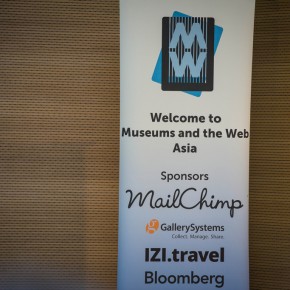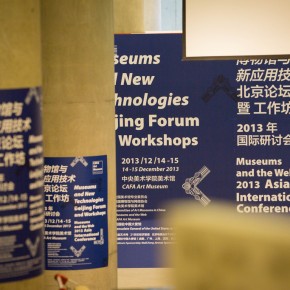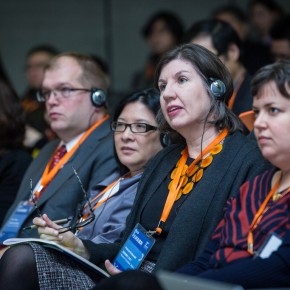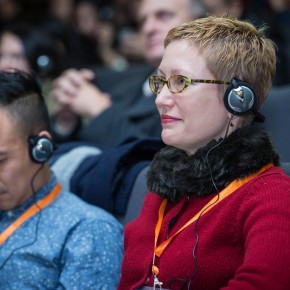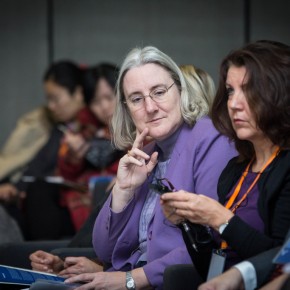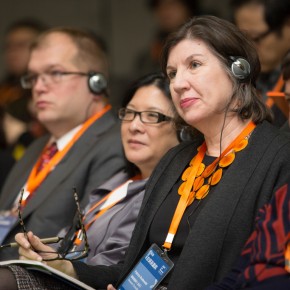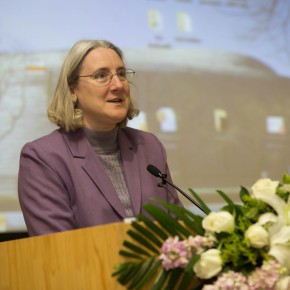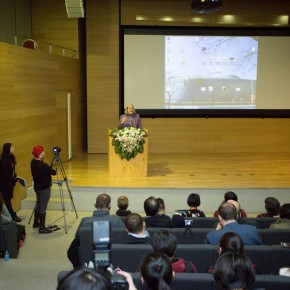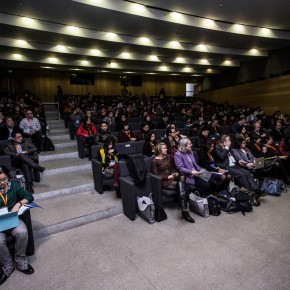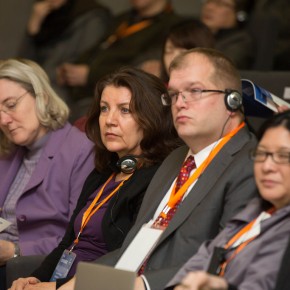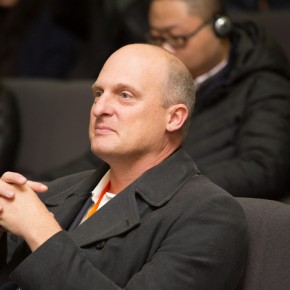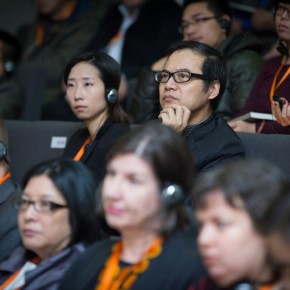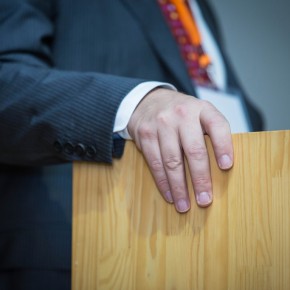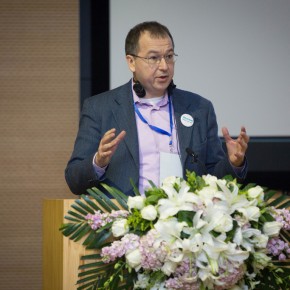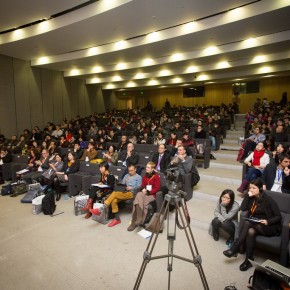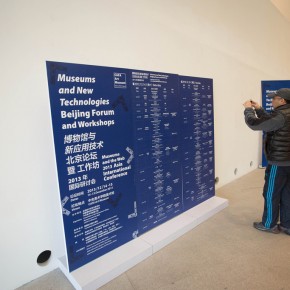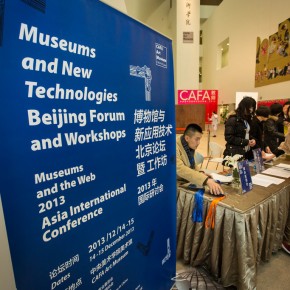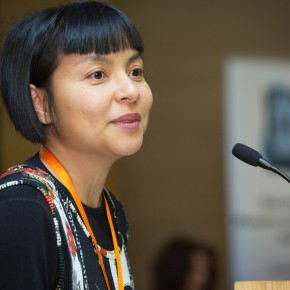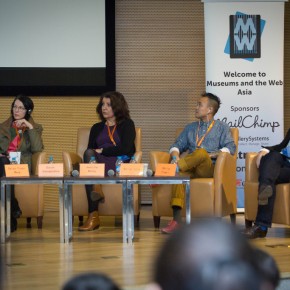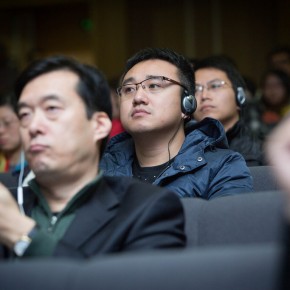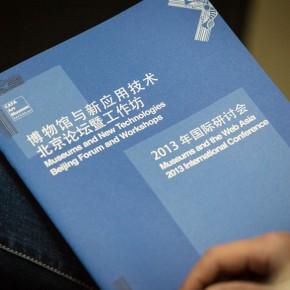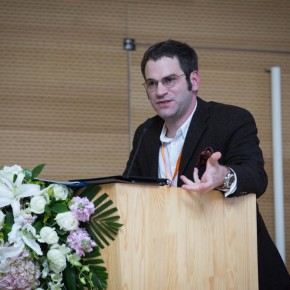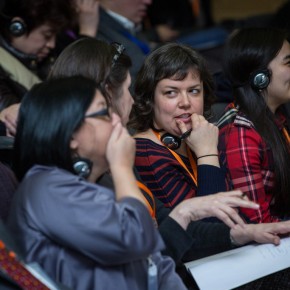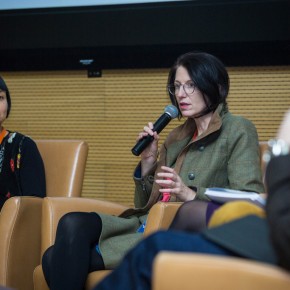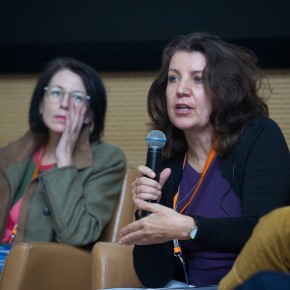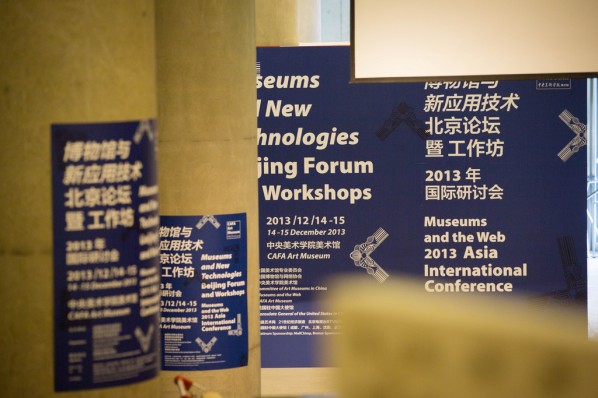
The "Museum and New Technologies" Forum and Workshops, Museums and the Web 2013 International Conference was held in the Auditorium of CAFA Art Museum on December 14 and December 15, 2013. The international conference gathered the world's top scholars, artists, and museum and gallery practitioners who discussed various topics such as the heritage of digital culture, creative experiment, interactive design, mixed media and emerging technologies. Ren Rui, deputy director of the Department of Public Education in CAFA Art Museum, Lisa Hellar, Cultural Consul from the Embassy of the United State in China (Beijing) and Nancy Proctor, Co-Chair, Museums and the Web, USA spoke at the opening ceremony of the conference.
The conference was composed of keynote speeches and workshops, in the section of keynote speeches on December 14, 12 scholars that use technologies in American and European museums, through demonstrations and case studies analysis, discussed key topics of museum technology management such as the web, online exhibitions and social media, educational tools, open data and open culture, client relationship management (CRM) events and fund-raising, file and digitalized agenda.
Rich Cherry, Deputy Director of the Broad Art Foundation and Co-Chair, Museums and the Web gave a speech on “Building the Networked Museum”, pointing out that there were as many as 130,000 people daily browsing the website of the Metropolitan Museum of Art, New York, ranked the first place in the world, we could now think of the museum as a node on a network, arguing against the museum as a dusty repository or an ivory tower.
Nancy Proctor, Co-Chair, Museums and the Web, USA and the panelists had a discussion on “Vendors Best Practice Parade”, shared their experiences related to the sale of cultural industry and collaboration with different museums, sharing the best practices they had learned from their work in the museum field.
In the keynote speeches of “Curation in the Digital Age”, Daisy Yiyou Wang, Curator of Chinese and East Asian Art, Peabody Essex Museum, USA, Adriel Luis, Curator of Digital and Emerging Media, Smithsonian Asian Pacific Center, USA, Sarah Kenderdine, curator of Special Projects, Museum Victoria, Australia and Director of Research, City University of Hong Kong, Philip Tinari, Curator of Ullens Center for Contemporary Art, Jennifer Mundy, Head of Collection Research, Tate, UK. They discussed the changing and transformational nature of curation in the internet of the digital era.
In the symposium of “From Engagement to Transformation in Museum Education”, Patricia Rodewald, Former Director of Education, High Museum of Art, USA explained the processes of the museum in developing a tour program for young people, as well as characteristics in the application of detail. It also summarized and analyzed the feedback of the users of the application. Wang Huangsheng, Curator of CAFA Art Museum introduced the features of public education of the museum: paying attention to the young audience; combination with non-artistic universities, attraction of more college students to enter the art museum; serving the communities; artists and curators participating in the record of the tour, caring for the special groups.
In the discussion of “Mobilizing the Museum”, Nancy Proctor, Co-Chair of Museums and the Web, USA initially summarized the current location-based technology that was often used by museums, the pros and cons of each technology was introduced, emphasizing users’ experiences and content, in addition to technology. Jack Ludden, Assistant Director of Head of Web and New Media Development, the J. Paul Getty Trust, USA introduced the use of mobile technology from the Getty Guide, in addition to some designs of interactive games according to different types of audiences. Rich Cherry, Deputy Director of the Broad Art Foundation and Co-Chair, Museums and the Web, USA introduced the experience gained by entering, taking the tour system of a park in San Diego as example, which used mobile device voicemail, accepting detailed explanations and introductions, etc., to help visitors have an improved visit.
Lauren Nemroff, Google Art Project and Google Cultural Institute, UK and Pearl Yao, Strategic Partner Development, Google China introduced the results and reflections from the Google Art Project and collaboration with the Google Cultural Institute. Lauren Nemroff talked about the impact of the internet: accessibility; technical improvement, improving the interactivity of museums and the audience; educational nature; protectively.
Through workshop activities it provided an opportunity for the participants to provide concrete opinions and positive ideas for the development of the relevant institutions on December 15. The workshops included: Cross-platform Digital Design, Digital Publishing, The Establishment of a Digital Museum, Beijing International Design Week and Beijing Digital Design Market, The Service of WeChat Public Platform and Audio Tour in the Museum, A Deep Dive into Gallery One and ArtLens at the Cleveland Museum of Art, The Service of WeChat Public Platform and Audio Tour in the Museum, Video Production 101, Digital Collaborations, Digital Immersion, The Digital Application and Research of Cultural Heritage, The Digital Museum in the Future.
Among, Jack Ludden, Assistant Director, Head of Web and New Media Development, The J. Paul Getty Trust, USA and Adriel Luis, Curator of Digital and Emerging Media, Smithsonian Asian Pacific Center, USA all gave a speech in the “Cross-platform Digital Design”. In order to reach their audiences across all the now popular platforms, more and more museums are presenting their web content using “responsive design.” Taking Getty Museum for example, in order to receive better users’ experiences, the team developed minimal, middle and large designs for phone, ipad, and computer, which were easy for users to browse. It was necessary for them to think about who and why people use their website?
Nancy Proctor, Co-Chair, Museums and the Web, USA and Susan Chun, Independent Consultant and Researcher, USA had a “deep dive” into Gallery One and ArtLens at the Cleveland Museum of Art. Gallery One Components includes the Beacon, Studio Play, the Lenses, Collection Wall, and Artlens App, in which Collection Wall featuring the largest multi-touch microtile screen in the United States.
Sara Bodinson, Director of Interpretation and Research, the Museum of Modern Art, USA and Patricia Rodewald, Museum Consultant, Beijing and Former Director of Education, High Museum of Art, USA gave a speech on “Digital Collaborations”. Sara Bodinson took MoMA as the example, talking about how museums could adopt a collaborative and interactive approach to research, design, development and launch for digital and cross-platform projects.
It was the first time for the Chinese art museum circle to hold academic activities related to a museum and new technologies, which was very significant.
Journalists: Ye Yuanfeng, Chen Peihua, Photo: Hu Zhiheng/CAFA ART INFO
Translated by Chen Peihua and edited by Sue/CAFA ART INFO


